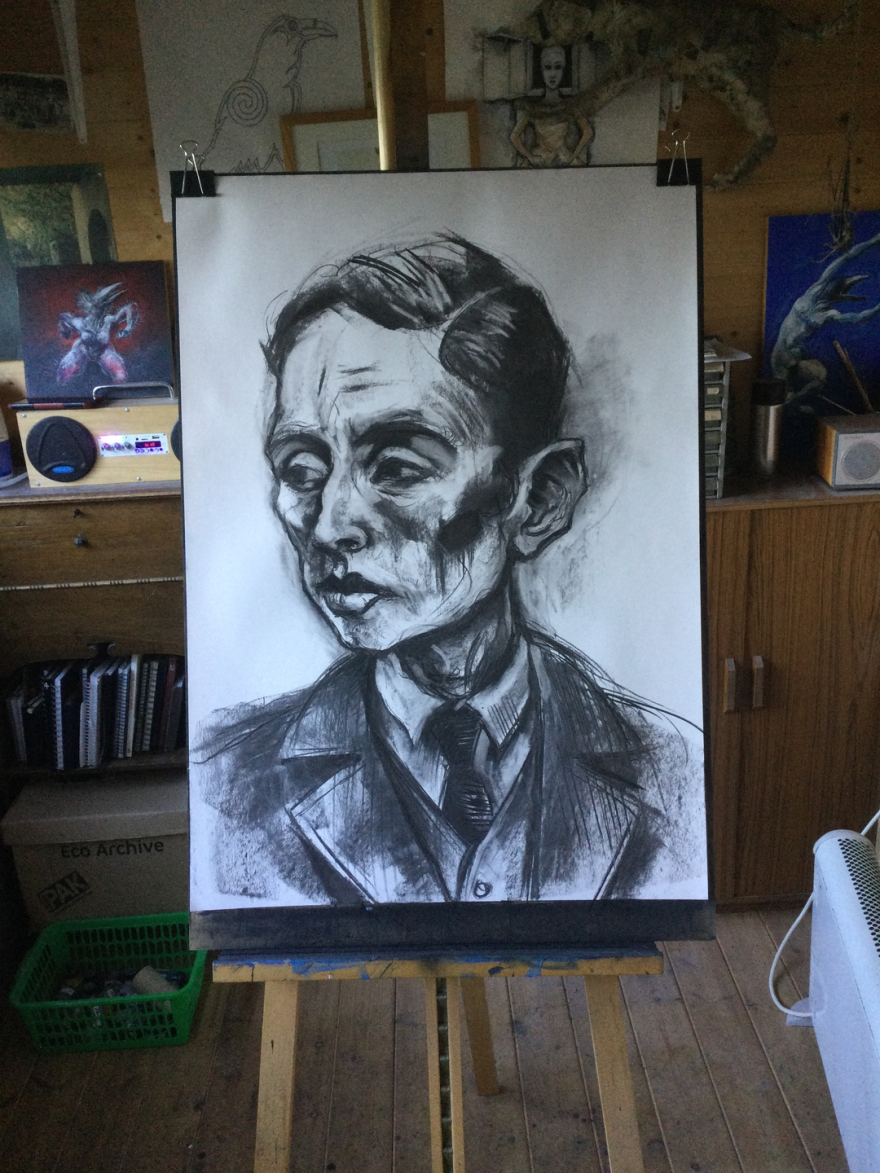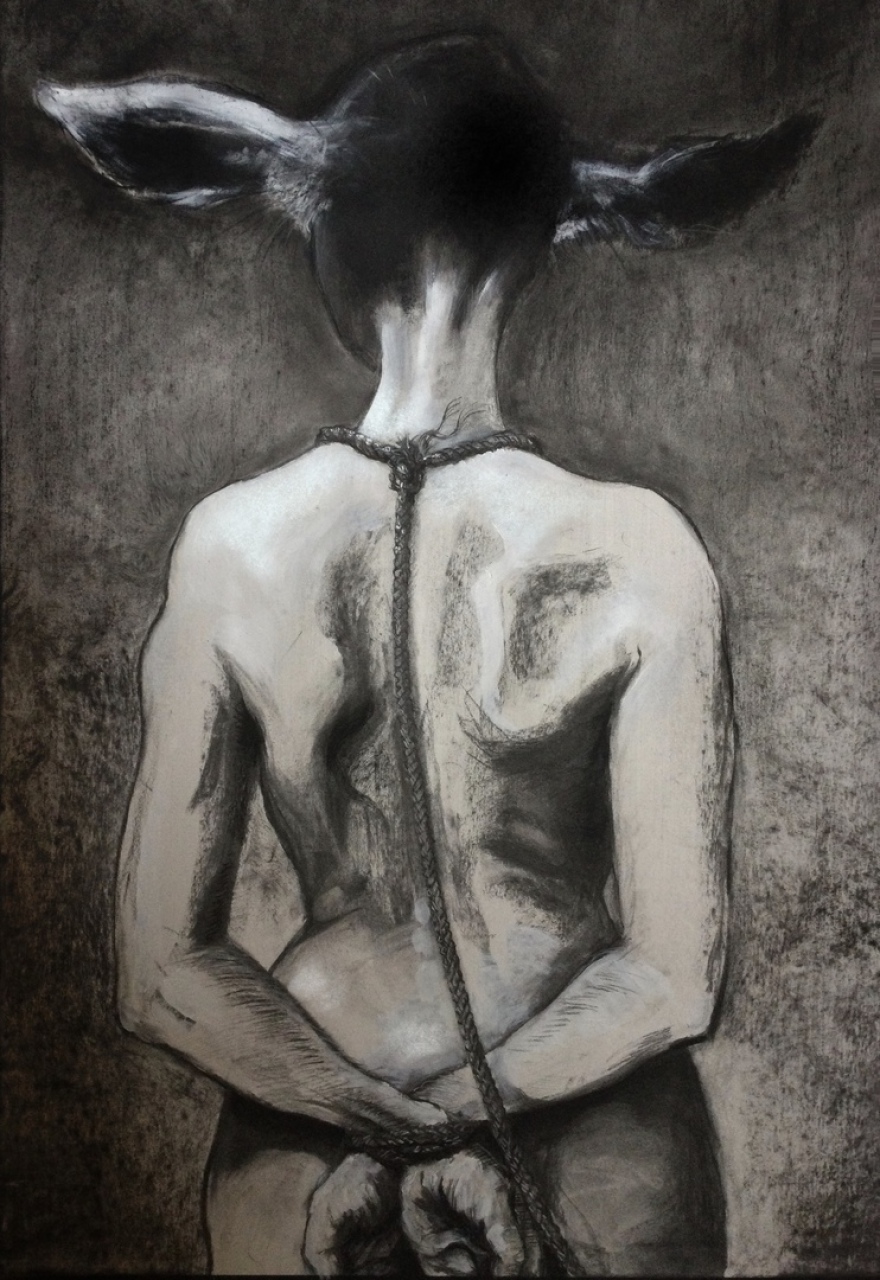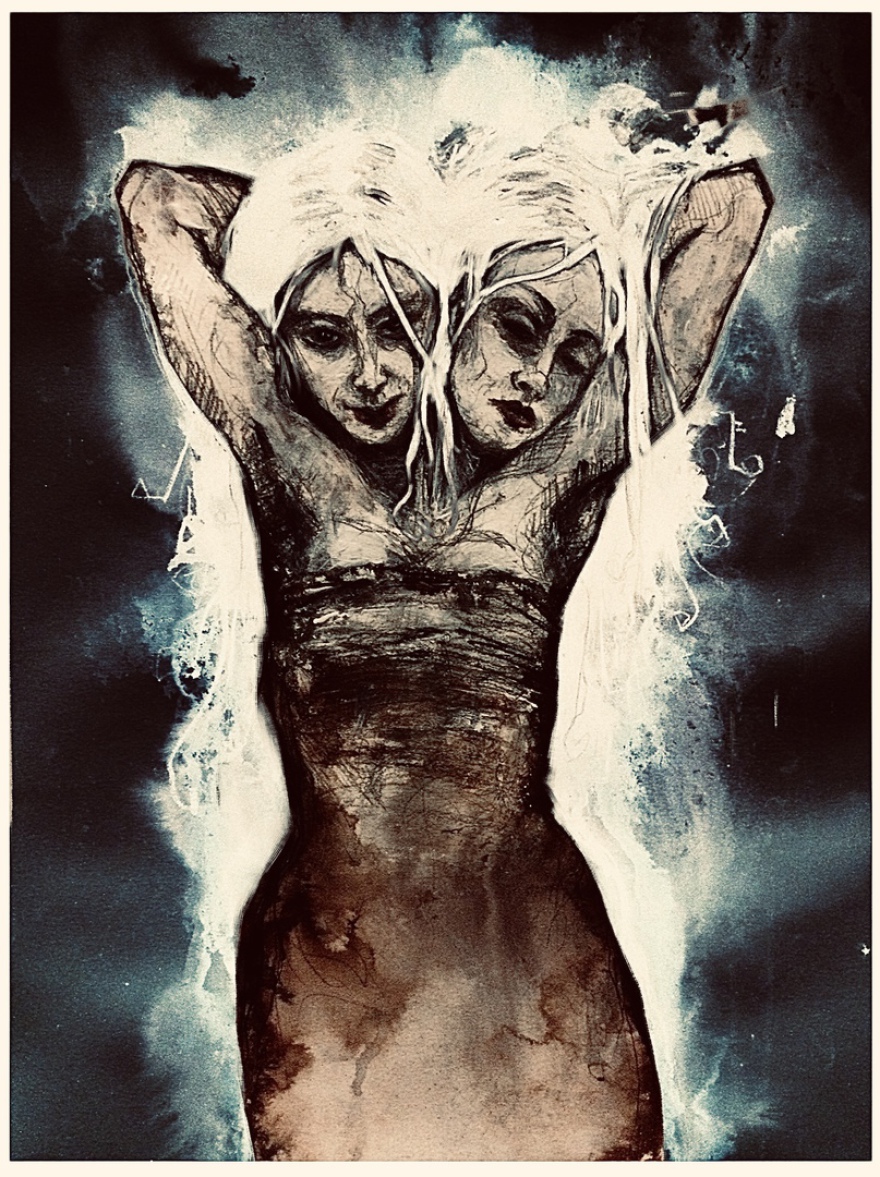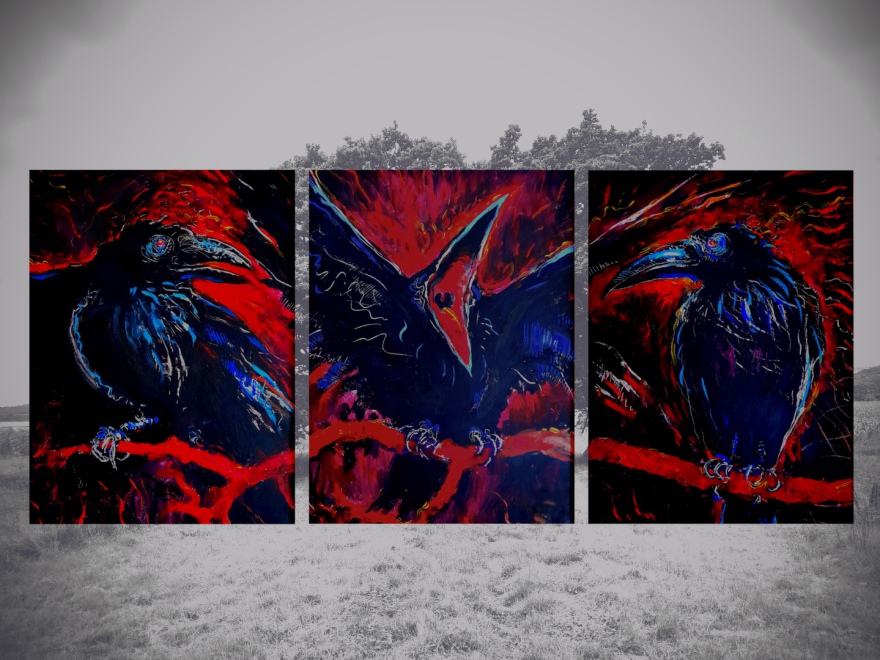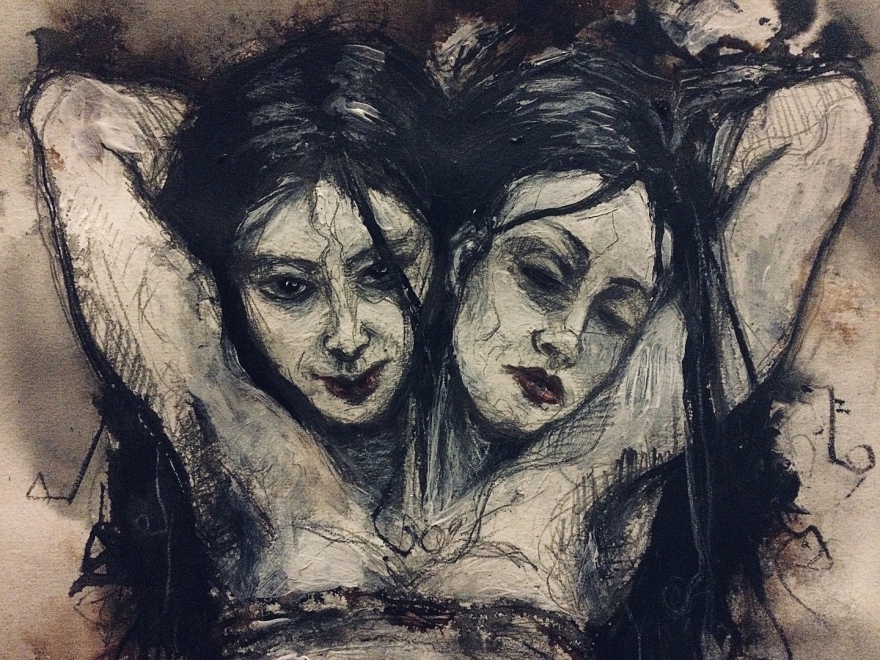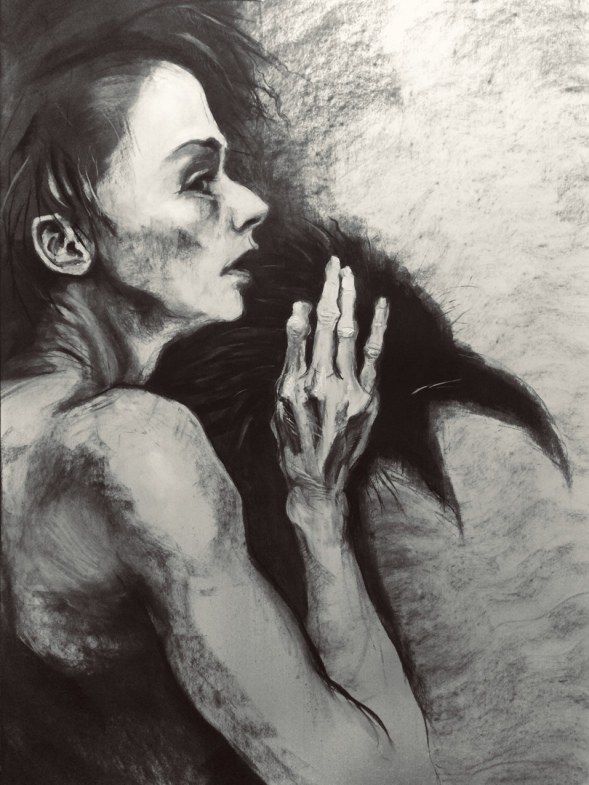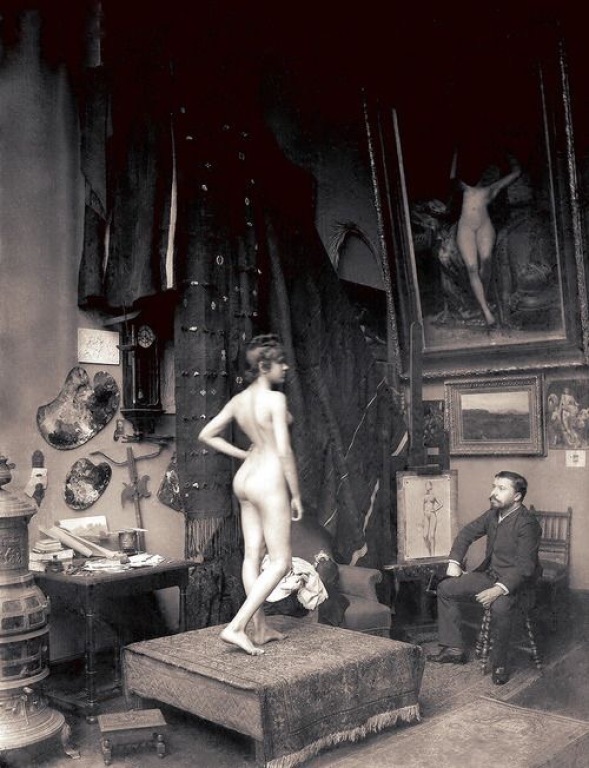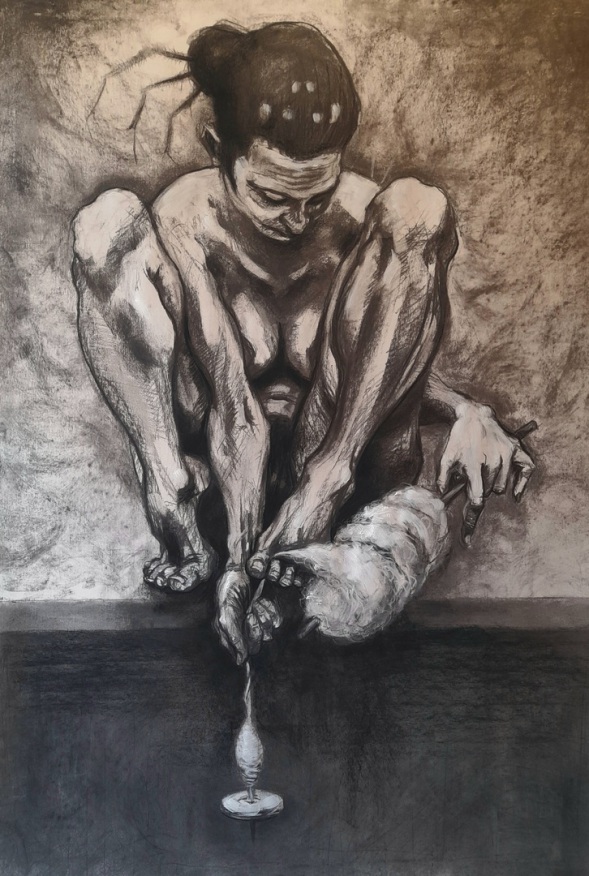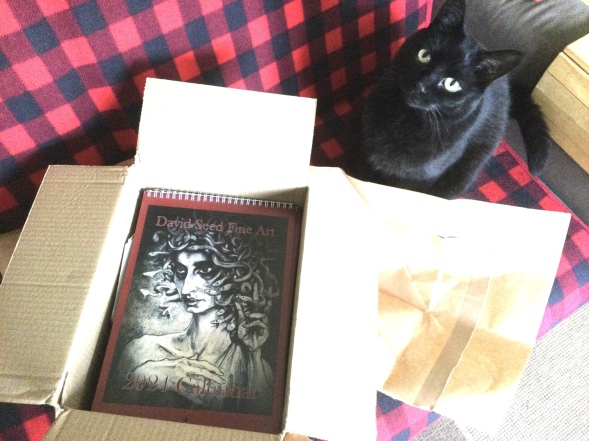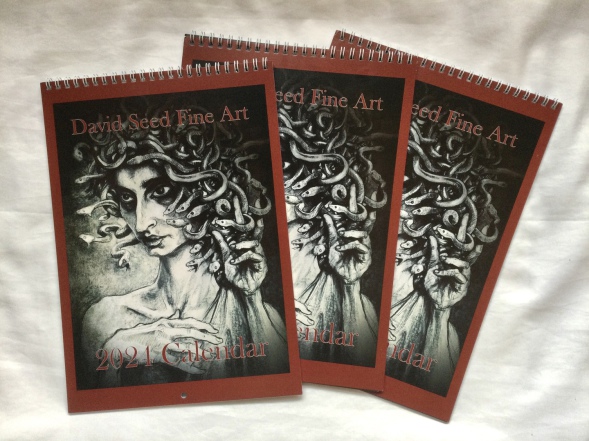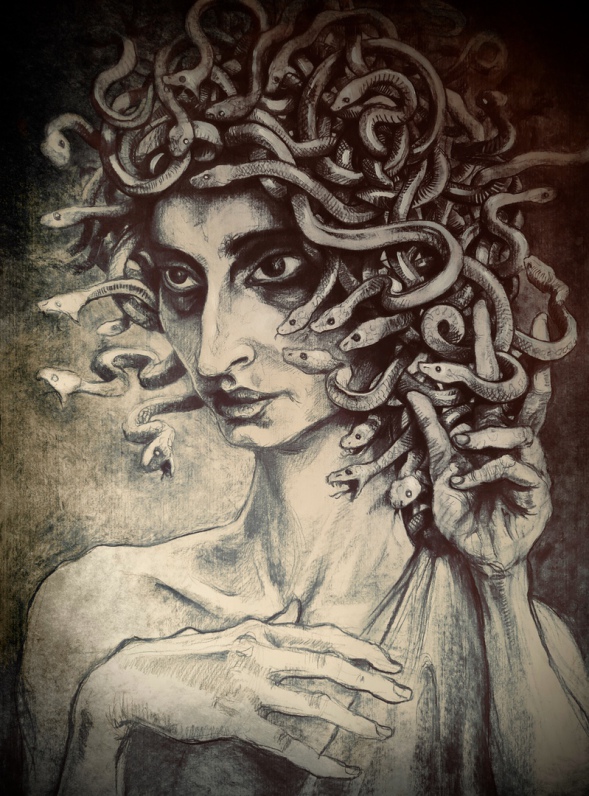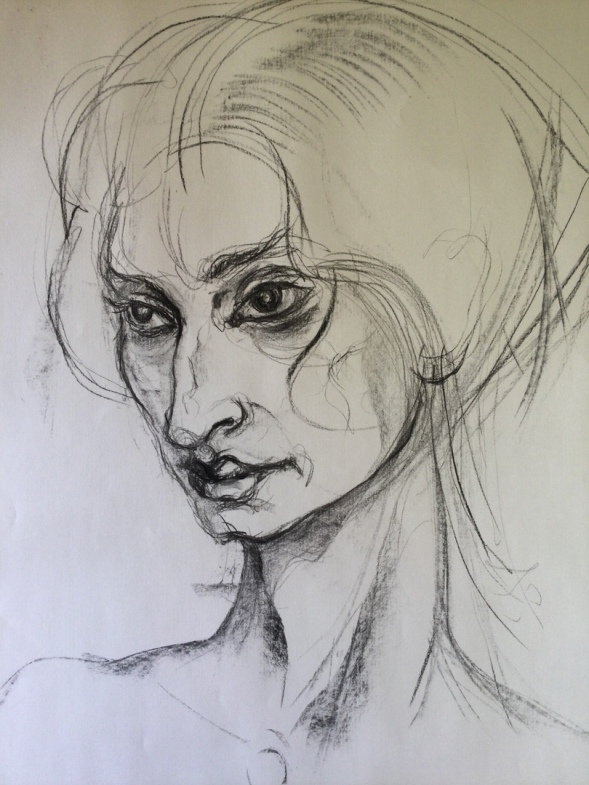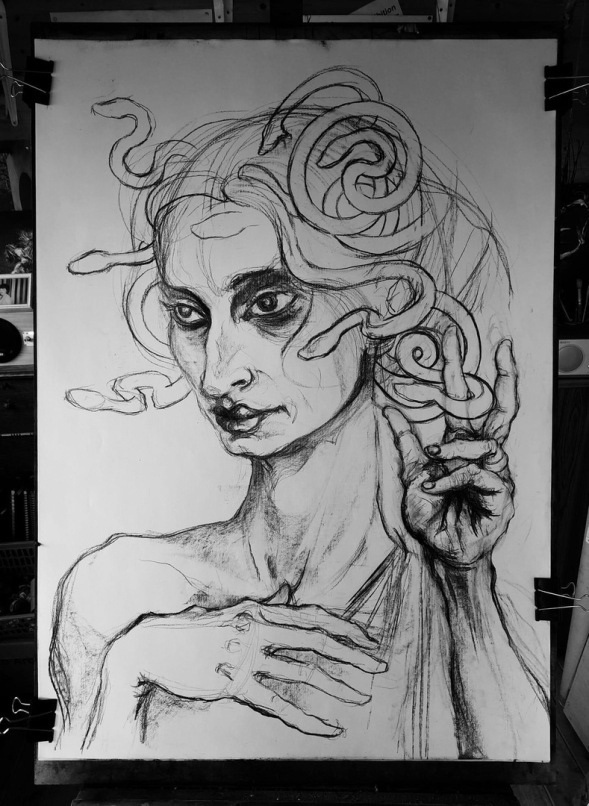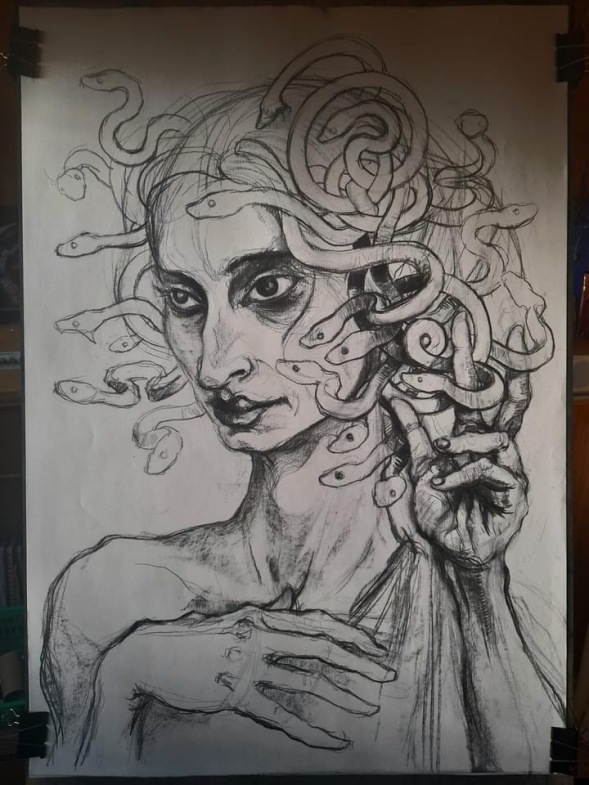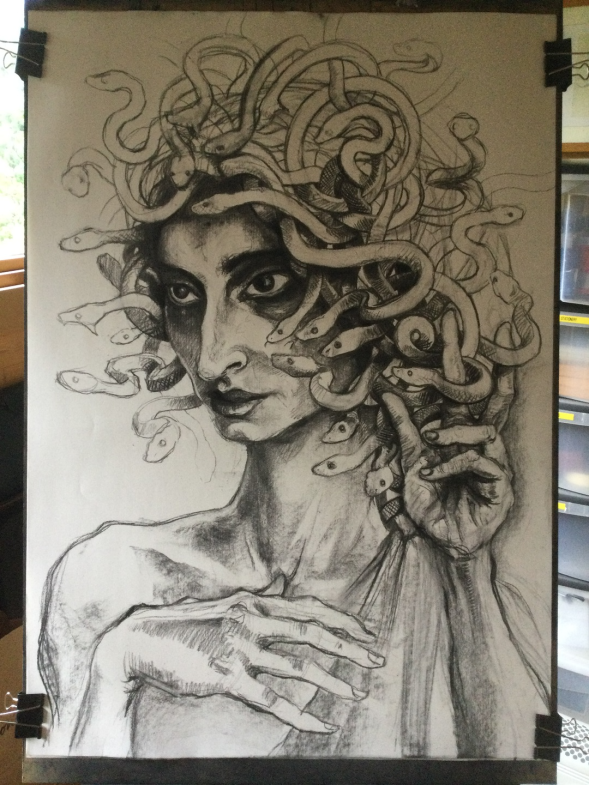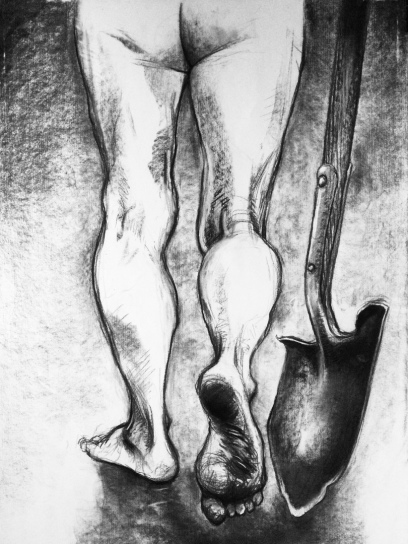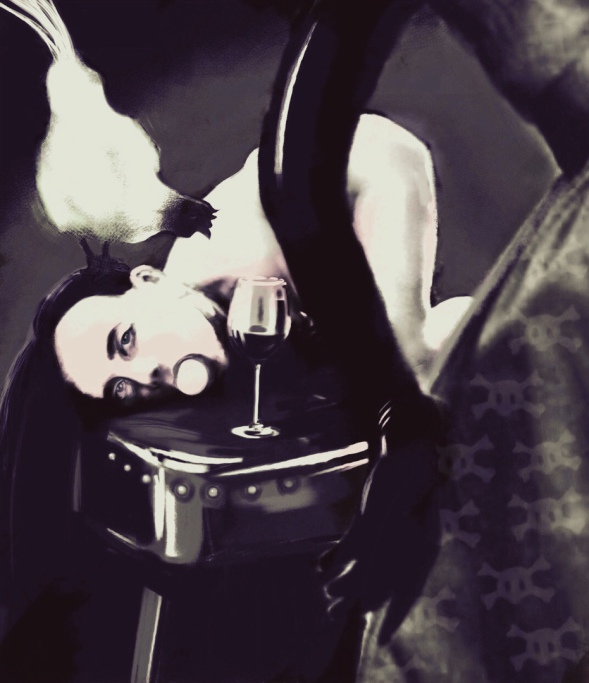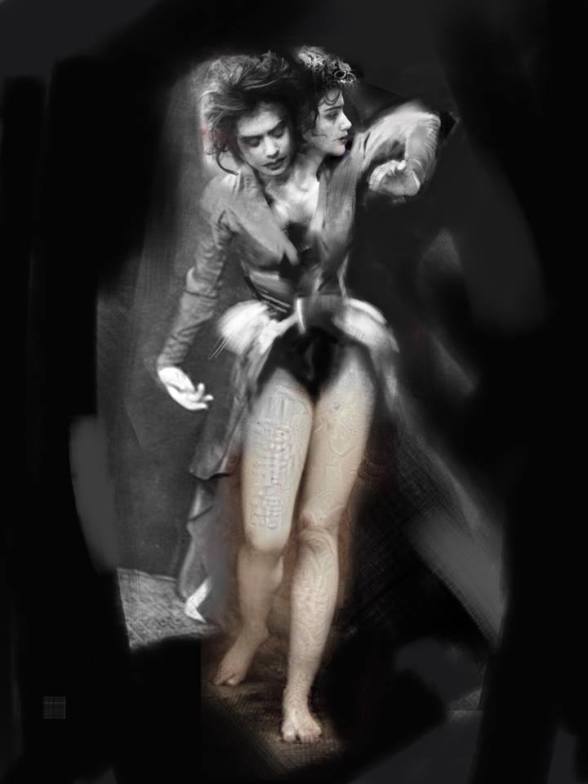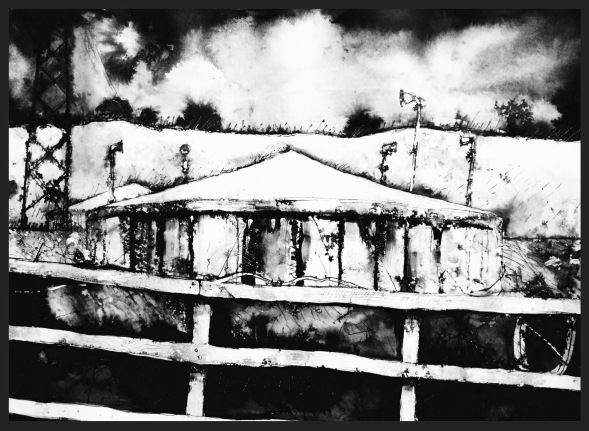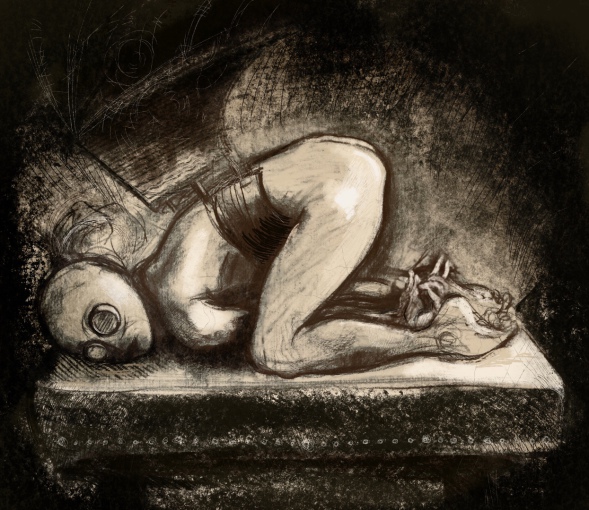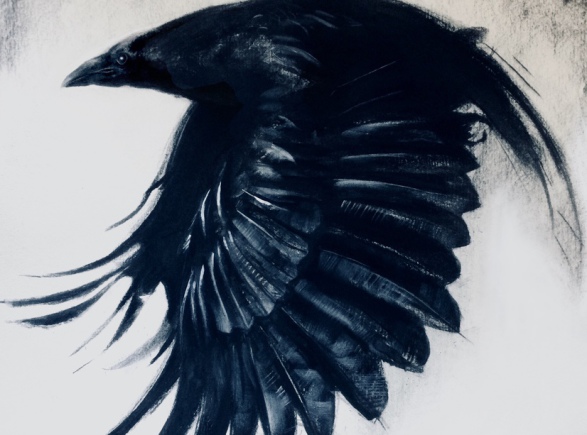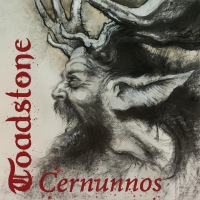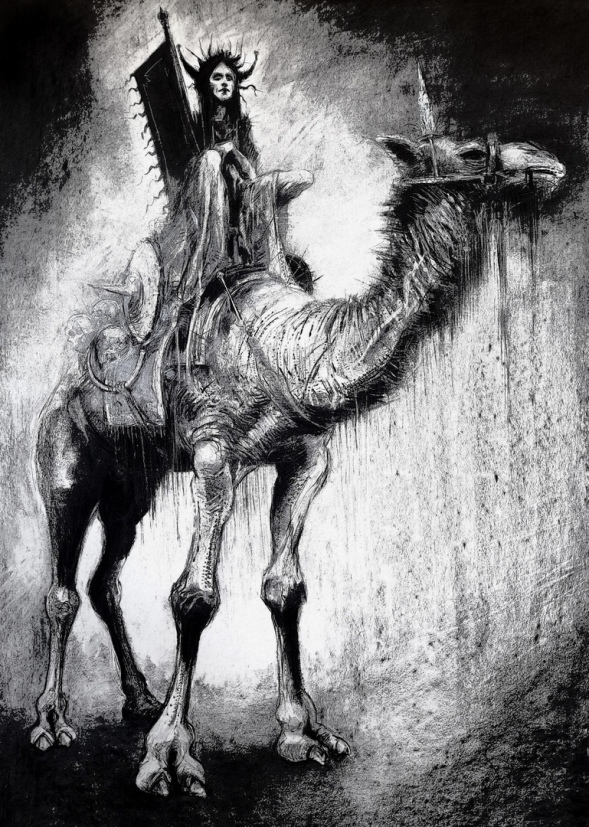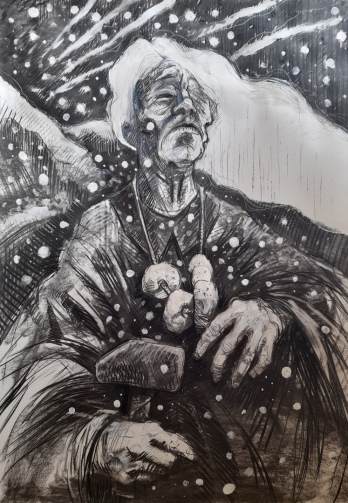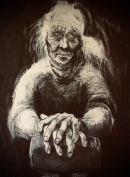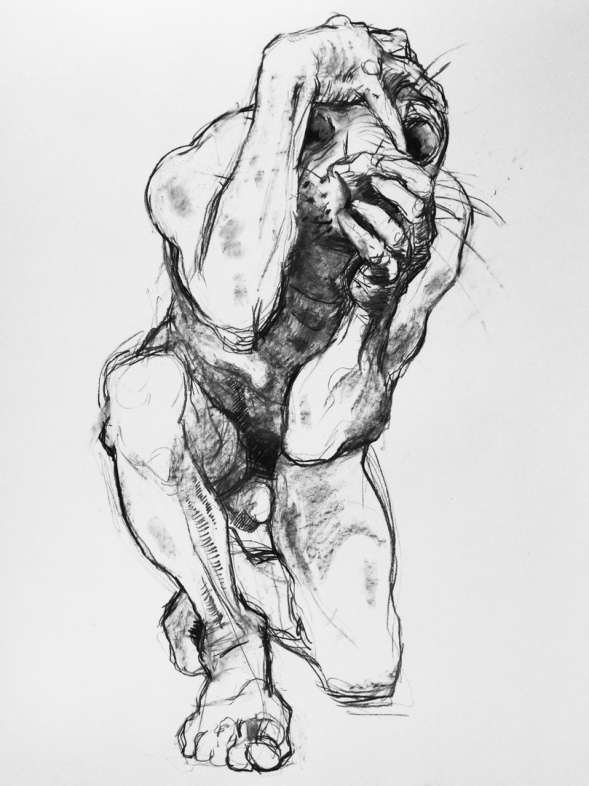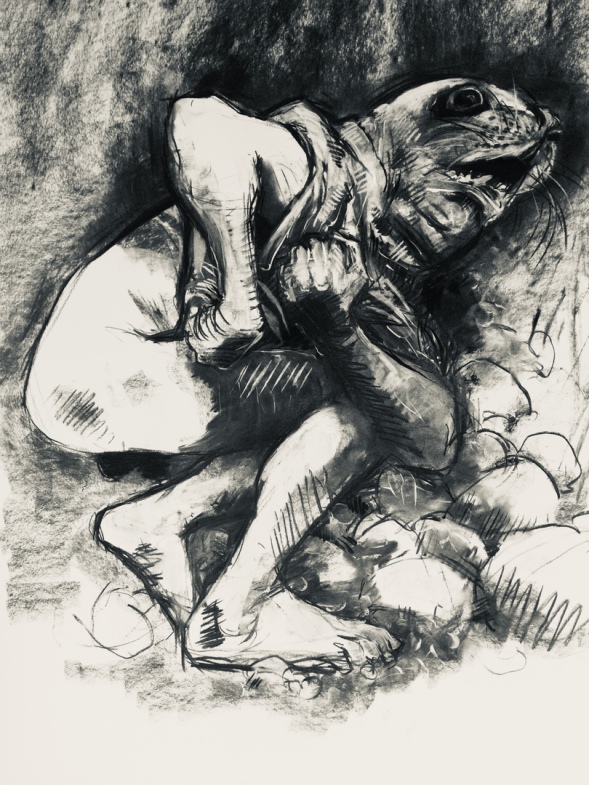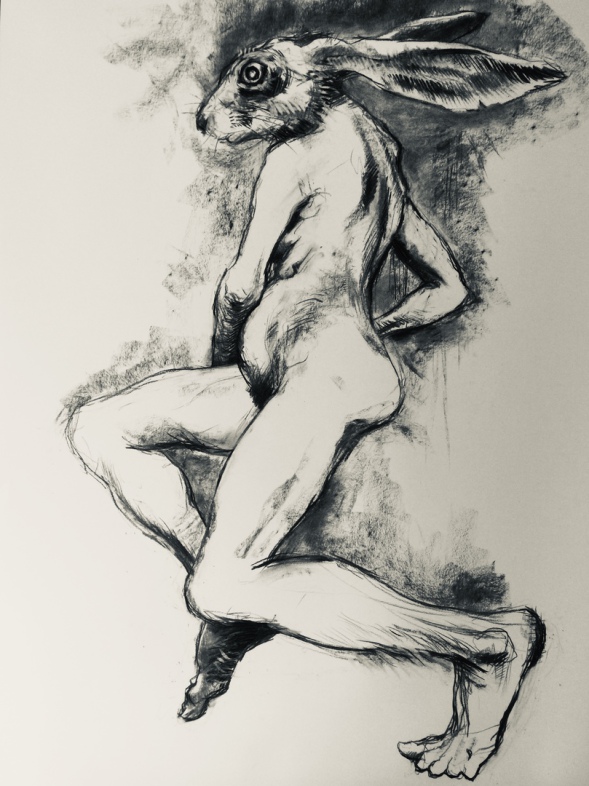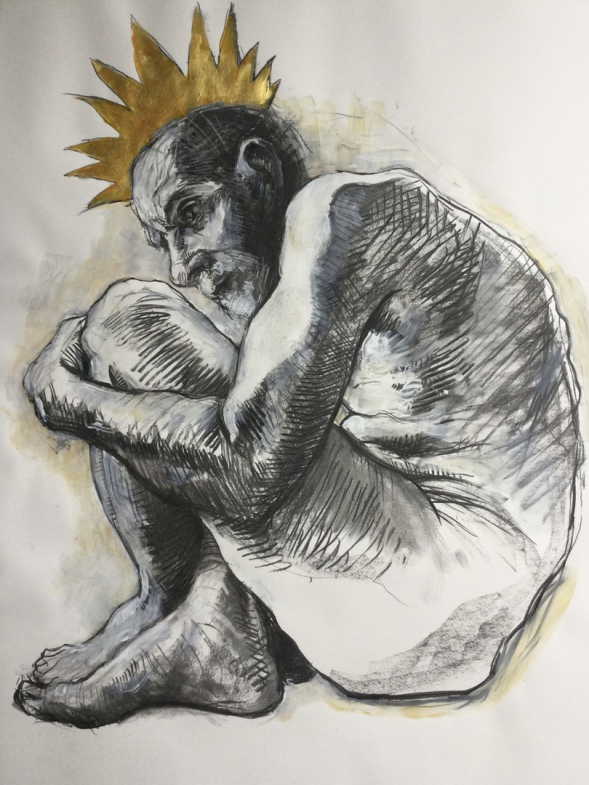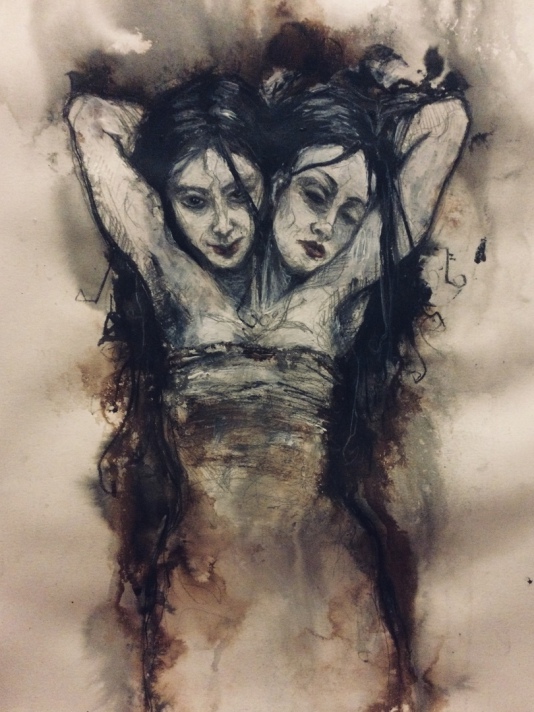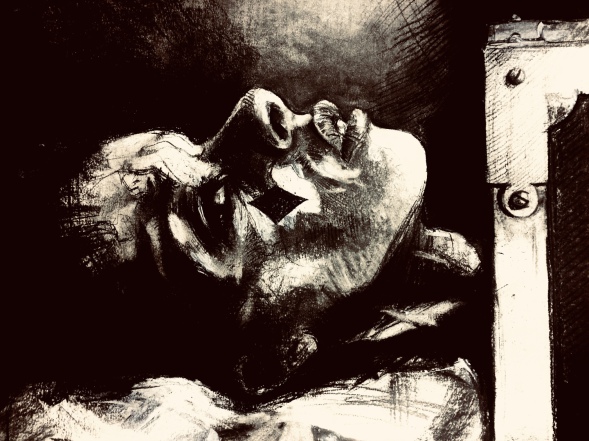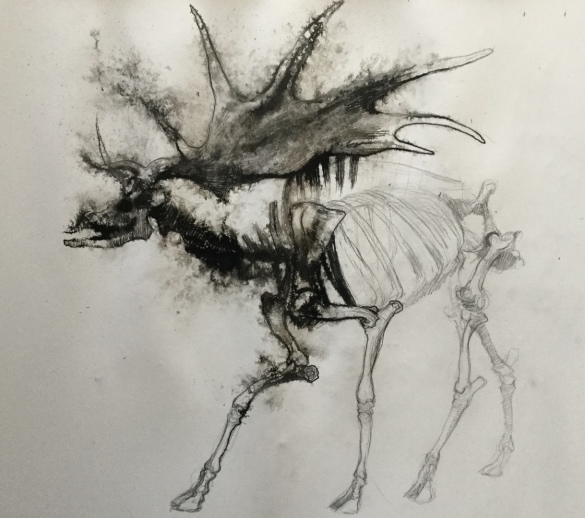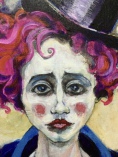24th July 2024
My Circus My Monkeys Teeshirts
I can do these for £35 including shipping for customers in the UK
Or £48 including shipping for overseas customers. Unfortunately, due to Brexit driven redtape, I can’t currently ship to Germany.
The shirts are organic cotton, available in a variety of sizes and colours, and are DTF/DTG printed (direct to fabric / direct to garment).
Let me know if you’re interested.
Red Cat will be available very soon.
Bird feeder and grizzled auld fella not included.
#mycircusmymonkeys #SomethingWickedThisWayComes #FlyingMonkeyCorps
Teeshirts printed by Teemill on organic cotton
7th July 2024
afternoon all.
Have just spent a couple of days partying in a field at the Rising festival in Staffordshire and prior to that a lot of time in the campervan in June so I've only really done one drawing in that
time. Here it is.
Aviator. A1 150gsm paper. Charcoal and mixed media.
You can find A4 giclee prints in my Etsy shop if you click the link on my landing page or follow this one directly:
https://davidseedfineart.etsy.com/uk/listing/1742775758/aviator-flying-helmet-valentine-erotic
17th June 2024 - some old scribblings:
Inside -
Velvet hooded window panes
blinding, binding Redhall farm
with night as dense
and thick as marl
Outside,
A motorway
runs through the holding;
Not quite a mortal wound
but still...
Listen:
Engines,
wheels of cars on tarmac
a grumble of white noise
Big beasts lowing in the byre;
Small beasts scrabbling
in the skirting
At the edge of hearing:
- Two short rusty choking screams
A pause...
...another
The dogs of Beresford’s farm
out beyond the road
Go crazy for it
You’ve heard the little fox before
She’s been getting braver
Or more hungry
Or more desperate
Closer now
A stream runs under the road
A concrete culvert
Silted beach
Plastic sheeting
Sleeping bag
A scalp of year dead terrier man
His sharpened shovel
Clotted shiv
She walks upright on two bare feet
Hugging shadows
Paints on a smile
Bangs at the door
Once was a girl
Once was a girl who was wrong
And because she was wrong she was wronged
Why was she wrong?
They said:
"She was wrong in her nature
"She was wrong in the way she spoke up
"She was wrong in the slyness of her glance,
"In the pertness of her attitude
"The way she walked in the light
And so they wronged her
Once was a girl
Who knew her own nature
Who had right in the way she spoke out
Who was right proud to stare down the starers
Was was scared of no man
Was not one to walk in the shade
And then they wronged her
That girl held fast
That girl held fast to the wrongs
The wrongs that were now branded on her
She danced them
She danced them clean
She danced until the night fell
She danced until her feet bled
She danced until her skin split
The crows watched while
She danced another nature
She danced her own unmaking
She danced herself unhuman
Her wrongs she made black pinions
Her wrongs a burnt bone beak
Her wrongs a gimlet stare
Her wrongs a file's rasp screaming
Once was a girl
Once was a girl who danced free
Once was a girl who danced free of wrongness
Hooded with a coalsack
Pinioned arms and scapulas jutting
The damp of the flags under numbed bare feet
Breaks chill sweats and shivering
They caught you in their nets,
Dragged you into their cathedral
Called you devil’s spawn
- careful boys, hold ‘em, that bick is sharp
Weighed you
Ringed your ankle
Marked you down in their book
Released you and slammed the door
The tall one
The one with the gob on him
You’ll remember him
His blue blue eyes
16th June 2024
would anyone be interested in teeshirts?
let me know in the comments
Comments
16th June 2024
been working on a couple of new drawings.
16th June 2024
I was lucky enough to be commissioned to do a mural in Gloucester's Westgate Street on the site of the old Poundstretcher convenience store (formally Gloucester's Theatre Royal). The shop front had been boarded up for some time and looked really shabby.
There has been a lot of work going on in this part of the city, renovating the buildings, some of which date back to Elizabethan times. Gloucester City Council, the Cathedral Quarter project and Gloucester BID, are all working together to make Westgate a better place, improving the environment, and encouraging business. My mural was part of that and the last two days was a celebration of the work that is going on.
My inspiration was hand painted wallpaper found in the Gloucester Folk building (formerly the Folk Museum) which showed Tudor Roses, Pomegranates (symbolic of
Catherine of Aragon) and a geometric knotwork pattern. The whole thing took four or five days and I had to contend with torrential rain and dive bombing seagulls. Good fun though.
Thanks to Brewers paints for their materials, advice, and support.
16th April 2024
So who wants to hear some spoken word stuff?
Click on this link. Let me know what you think.
Comments
16th April
Back in the studio. Drawing practice
10th April 2024
Back in the studio but I feel like I'm struggling. Not at all sure about this one or which version to go with.
4th April 2024
Who wants to see more prose or poetry dropped into my blog? I can easily do this and it might make a change from looking at the pictures. Let me know what you think.
Comments
Comments
10th March 2024
Afternoon folks. Prints of my drawing "Hearken" are now available in the shop.
https://davidseedfineart.etsy.com/listing/1668505306
7th March 2024
Well the inevitable has happened and I've finally had my Instagram account hacked.
After years and years of being hyper vigilant I fell prey to a phishing scheme yesterday. I am now locked out of my account by a scammer who has blocked me and is now messaging people on my friends list trying to catch them in the same way.
If anyone follows me on IG, my old account is dave.seed@instagram.com - please don't respond to any messages you get from that account. Report them and block instead.
My new account is www.dave.seed1@instagram.com and you can tell it's me because you'll see old beardy weirdy David Seed doing a video about it and being very annoyed.
I sincerely hope none of you get caught out.
David
--------------------------------------------------------------------------------
4th January 2024
I've reduced some of the prices in my shop. There's a link at the bottom of my Home page if you want a gander.
--------------------------------------------------------------------------------
3rd January 2024
Happy new year everybody. I didn't stay up until Midnight listening to my Jimmy Shands as I had the snot, and won’t be posting any new art today as I haven’t created any this week (again because I have the snot).
Instead, can I alert you to the existence of a facebook group which is an adjunct to my facebook art page (see links). The group is
"Something Wicked This Way Comes". To find it use the search term "Mrs Mote".
SWTWC is a generalist art group that caters to vagabonds, pickpockets, thieves and pirates.
To give you a flavour, here’s an abstract describing how one of our society came to join us:
Florence Bousfield, maid of all works, is not indigenous to the island. She originally hails from Mablethorpe but left there under
something of a cloud having spent her early teens running with the Lincolnshire razor gangs and organising protection rackets amongst the amusement arcades and gelateria.
She fetched up like a bad penny in the bustling metropolis of Norwich and for a while earned her crust in the Mermaid Fishe and Chip Shoppe and Payday Loan Specialists. For serving behind the
counter, she was given two shillings and sixpence an hour and all the luncheon meat fritters and scraps that she could eat. This played merry hell with her complexion and she would return home to her
back street garret stinking of fat, and with a band of batter coating her lisle stockings at shin level from the basins stored under the counter.
Old man Kostas (he wasn’t Greek, just in the habit of assuming new names when his creditors came calling – he was working through the
alphabet) was forever trying to persuade her into the cellar to see his spud peeler, but she was nimble and slippery as an eel, and had thus far evaded his attentions when sorting out the King
Edwards.
The Mermaid was a cut price outfit, selling wormy pollock as cod and slices of Battered Mother’s Pride as plaice, and it was notably lacking
in any investment into either deep fat fryer maintenance or fire precautions. One Saturday night the inevitable happened. Five gallons of black dioxin-laden tallow caught fire and Kostas, for want of
a fire blanket or suitable fire extinguisher, deployed a basin full of wet batter to disastrous conclusion, burning fat exploding over the counter, floor, and igniting the filthy gloss-painted
polystyrene tiles on the ceiling. Kostas, wearing as was his wont a cotton apron encrusted with one or two inches of DRIED batter, was largely armoured against personal immolation, although he did
lose his eyebrows and toupee. Florence lost her employment, although it is arguable that the long-term health prospects of some of the local population increased.
Being short of money for rent Miss Bousfield ventured to the Post Office to withdraw the last of her meagre savings. As she got there, she
spied in the window, amongst the standard issue wasp cemetery, a yellowed card bearing the following faded message in turquoise ink:
“Monsieur P requires personal assistant for ongoing journalistic project. Must be punctual, petite, and consciensious. (Florence noted
the spelling mistake)
No tattoos.
Three shillings/hour.”
There was no indication of an address or telephone number on the front of the card, but on entering the post office (the bell above the door eliciting no response from the blonde, middle-aged post-mistress who sat behind the glass barrier gently snoring) she saw another message on the back of the card saying:
“Stoat and Ulcer, lunchtimes, ask for Roly”
That afternoon Florence found him in the snug of the pub, drinking his fourth Gold Label Barley Wine and watching the horse racing on a snowy TV in the corner. Once she’d explained to him that she was in need of a job he bought her half a pint of stout and introduced himself properly. His name was Roland Parsnip, and he was attached to the Norwich Gazette and Racing Post. He was a photographer and Illustrator (with a capital I) and it was his job to take his camera along to interviews conducted by the writers, photograph horses and greyhounds, as well as providing a weekly satirical cartoon entitled “Norfolk Piddock”.
Parsnip revealed that he was also a serious artist who produced photographs and drawings for a number of quarterlies and periodicals of a
somewhat specialist and esoteric nature. He required a personal assistant to fetch and carry, make tea, answer correspondence, and run interference when invoices needed paying. He needed an employee
who could begin immediately and although Florence didn’t have a resumé or references, seemed extremely keen on giving her a start. For her part she ensured that there would be holidays, negotiated an
extra tuppence per hour, and the use of a bicycle for transport. They shook hands and Florence skipped home for a celebratory eccles cake.
The next morning saw Florence approaching a row of railway arches that had been converted into workshops and storage space. One, next to a
canal that ran underneath the railway, had open wooden gates and a sign painted with the words “Alf Tupper – Welder”.
The gloom of the workshop was periodically lit up by the flash of a welding arc and she recognised the workman one of her customers from the
Mermaid. He was a man in late middle years with a pronounced limp who would try to sell her copies of the Morning Star when buying his fish and chips. Known affectionately to his friends as “Lenin”,
Alf had been something of an athlete in his youth before a ripped cartilage in his knee had put paid to his competing. Alf was a friendly chap but apt to latch on to his listeners and use words like
“dialectic” which Florence had thought was medicine for the runs.
The railway arch next to Alf’s was partially bricked up with a steel-plated door bearing the legend “Nightshade Studios, Monsieur P. By
appointment only”, whilst the remaining lockup in the row was sealed with rusty corrugated iron sheets.
Florence banged on the door which was opened after a minute or two by a rumpled and bleary-eyed Roland Parsnip.
Inside, the archway was surprisingly large, maybe twenty foot wide by forty deep, but there was a lot crammed in there. In addition to a
plywood shuttered office-space there was a dark room, a changing room and toilet, clothes rails, a sink and kettle, a painted backdrop and screens on stands, spotlights and silvered umbrellas on
poles, a drawing board, and a couple of plan chests.
Parsnip was in the middle of a photographic shoot and explained to Florence that whilst some of the pictures generated would be used in
magazines, others would be used as reference for drawings and cartoons. The subject of this particular session was a forty-year-old Scottish redhead called Rhona who was, from the waist up, dressed
up in hunting pink and top-hat, and sitting astride an antique mahogany rocking horse. Introductions were made and Florence was dispatched to the kitchenette to make tea and lemon curd sandwiches
whilst Parsnip carried on taking photos. She noted that there was also some potted-beef but Rhona, a philosophy PHD student, revealed that she was a “life-long vegetarian, thank you very much
hen”.
And so it went. For weeks Florence cycled along the tow path of the canal to work, sometimes visiting the corner shop on the way to pick up
supplies, and spent her time in the studio as factotum: cleaning, making tea, producing contact sheets, delivering bribes to the vice squad, ironing costumes, sourcing props, unblocking sinks,
writing letters; in fact, absolutely everything surplus to the creative process itself. She found that she was enjoying herself immensely, was greatly relieved that she no longer smelled of the
chip-shop (her skin improved) and was forming friendships with Rhona and the other models that Parsnip employed. These included Georgette, a six-foot five émigré from St. Kitts who moonlighted as a
model to supplement their income as a hospital porter, Cecily, a seventy-year-old dominatrix from the home counties who wrote poetry and articles for a feminist journal, and Mackenzie, a tiny
contortionist from Doncaster.
For three days every week Monsieur P returned to the newspaper offices, or as far as Florence could see, their annex the Stoat and Ulcer,
and carried out assignments for the newspaper. For some of the rest of the week he became Norfolk Piddock, and would sit sweating and twitching at the drawing board in the studio, desperately
trying to carve satire out of the quotidian. On these occasions Florence learnt it was best to avoid him, and find tasks to carry out in the darkroom or in town. On other days however, he would perch
like a king on the same seat, squared off photographs in front of him, and drawings of a most peculiar and recherché kind would fill his portfolios. Talent, he had in quantity, but Florence soon came
to the opinion that if he spent less time in the pub and concentrated on a more mainstream subject matter (landscapes? Pet portraits?) he might be more successful. He never bilked her on her wages
however and was generally a fair and considerate employer.
Weeks turned into months, and Florence’s list of duties increased to include liaising with the editors of periodicals such as “Gâteaux”, a
quarterly specialising in photographs of twinset clad ladies first baking, then sitting on, cream cakes (Florence set up an account with the local bakery and organised the installation of a shower
and twin tub but considered this to be a terrible waste of food), “Suffolk Punch”, fin de siècle poetic smut badly translated from French, and illustrated with soft-core photos and drawings of
matronly types doing what Parsnip asserted were “Gallic things”, but which Florence had doubts about, “The Ring”, an annual devoted to masked wrestlers and body-builders in which Georgette featured
prominently in a Lucha libre mask and thews anointed with baby oil, and “Stern”, a small, yellow, limited-edition book of illustrations of a most peculiar kind. Florence was sometimes asked to nip
next door to see Alf the welder about constructing specialist equipment for the shoots but, for the most part, Parsnip relied upon his febrile imagination to come up with the
goods.
After half a year Florence was persuaded to take the plunge and model for a publication aimed at devotees of all things ecclesiastical. Much
merriment ensued and many lemon curd sandwiches consumed but, one September afternoon whilst she was clad only in wimple, scapular, and victorian lace-up boots, the air was riven by a police siren
and the door battered down by the rozzers. Georgette and Mackenzie grabbed Florence and spirited her out the back entrance and onto the towpath where they flagged down a passing narrowboat piloted by
a retired civil servant from Gurnsey.
Once more Florence was unemployed, and so, having changed into more appropriate clothes, returned to the Post Office. She found another card
in the window, this one advertising for a “maid of all works” at a place called Severin House. It had a PO Box number to write to for an application form and specified most particularly that replies
written in green crayon would be binned. The post-mistress still snoring behind the counter, Florence filched a pack of Basildon Bond writing paper and some envelopes from a display stand, scrawled a
response, then woke up the woman such that she could buy a stamp.
The rest, as we say, is history.
So there you have it.
Lang may your lums reek.
Jules Toulot and unknown model (not Florence)
11th October 2023
New drawing. This is Arachne, and she is drawn using charcoal, black and white conte and titanium white acrylic paint on A1, 130dsm smooth cartridge paper.
Prints are available if you go to my Etsy shop using the link at the bottom of my landing / home page.
27th September 2023
It’s that time of the year again.
The calendars are now in my shop. This is the best quality print we’ve had so far and I’m really proud of them. They are A4, ring-bound, month-to-view calendars with my best twelve drawings of the
year. If you’d like one follow the link, although if Gloucester or Cheltenham friends want to approach me directly, I can sell you one without you having to pay for postage.
Go to the shop link on my landing page.
#calendar2024 #ChristmasGift #Prints #Pagan #Gothic
25th September 2023
Mother Medusa is finished and now available in my etsy shop. In other news, the 2024 calendars will be available in a few days time. Stay posted.
13th September 2023
New drawing started. this is charcoal on A1 paper as normal (approx 23 x 33 inches)
I'm hoping to be able to list it in the shop in a couple of weeks time
3rd September 2023. New drawing. Prints are available if you go to my shop (bottom of my landing page).
12th August 2023
Typical scammer comment response to my shared posts of late (winky wonky grammar on account of it usually being AI chatbot generated):
“Most ethereal, powerful ART, I like it. I am collector of wildlife paintings and other subjects. Would you be interested in selling your work? Is it available as NFT?”
…umm. No. Not really.
The scammers have typically only been members of the relevant groups for a couple of days and will block and copy their spiel to about ten other people before finally getting kicked out by group
admins. Now because I’m ancient of days and not really down with the kids, I didn’t really understand what NFT means. It’s a little like when I’m in the pub and have had a few drinks to ease my
social anxiety and am generally talking bollocks to anyone who will listen and am using big words that I don’t really understand because it makes me sound more photosynthesis. I kind of thought I
knew what NFTs were and that they were generally A BAD THING, but I decided to look ‘em up anyway. Turns out they’re not necessarily A BAD THING for most folk but they are most probably A SILLY
THING that will leave you out of pocket. They’re a type of cryptocurrency and can consist of absolutely any type of digital artefact, typically digital images but also other stuff including this
Facebook post, not that anyone would be daft enough to pay good money for it. These chunks of data can be bought and sold and stored in digital vaults where presumably you can have the pleasure of
lying on them for eons like a digital Smaug the dragon. All a bit Emperor’s New Clothes, but like any other currency including hard cash it only works as long as people believe the collective
delusion that this stuff actually has any real value. (I’ve been known to appal my accountant because I sometimes barter labour or material. That sort of stuff has, as he is oft at pains to remind
me, REAL value, and is therefore taxable.) Ahem, where was I?
The bubble has apparently burst with this particular trading operation but there are still people out there who believe that they can make money out of them.
Here’s the skinny if you want to enlighten yourselves:
https://www.theverge.com/22310188/nft-explainer-what-is-blockchain-crypto-art-faq
(Bonus info gobbit - when typing on my iPad it gives you predictive text along the top of the onscreen keyboard which you can choose to tap on and use if you so wish. I normally ignore it but I’ve just clocked that the word “but” will give you various options and that they are not contant. Normally it predicts “button” or “butter” but it’s just given me “buttplug” and “buttsmithy”. Try it. You’ll thank me later.)
12th August 2023
Revisited the drawing I’d worked up using Procreate and finished it off using traditional materials (willow charcoal & conte).
The music I’m listening to in the studio is “Cannibal’s Hymn” from the Nick Cave & The Bad Seeds album “Abattoir Blues / The Lyre of Orpheus”.
10th August 2023
How's everyone doing?
looks like this website is finally starting to pick up traffic. Not sure what's changed but I'll take that.
The sun's shining in my corner of the West Country, I've had sushi for lunch, and I'm working up to going outside to the studio.
iIt occurs to me that I've never posted "in progress" videos here. Allow me to address that.
Here's one from a few weeks ago:
4th August 2023
Here's another one. Cornertime. A charcoal drawing again remastered using Procreate. Again available on Etsy.
4th August 2023
old image updated. It was generated using the Brushes app on iPad & remastered ysing Procreate. It's available in the shop. If you go to home (the landing page) there's a shop
link.
A nude androgynous figure kneels on a podium with an egg in their mouth and a chicken on their head. There is a half full glass of merlot on the podium beside them. Another figure stands in the foreground wearing a skull print party dress and latex gloves. Oeuff.
1st August 2023
Some weirdness going on with this website. when I put in the search term "DavidSeedFineArt" iinto Google, everything is as it should be. If I try that with Bing or Yahoo! or other search engines I get corrupted data: apparently I'm an investment consultant, and there are odd snippets of prose appearing that I have in fact written, but which have never been anywhere near my Ionos website. Is this AI voodoo? what do I know, I'm an artist.
Want to see some old pictures?
Here you go:
31st July 2023
Hello folks. Its been a while. I'm still creating and selling work. if you're interested in originals contact me, otherwise go to my Etsy shop. there's a link on the landing page that should take you straight there.
22nd May 2023
Still playing with Procreate work8ng up charcoal drawings. I like it very much. I was put onto it bythe very awesome Michelle Wolfskulljack. You can see her stuff here:
17th May 2023
Afternoon folks. Sorry I've gone a bit dark for the last six months. My dear old mum's been ill and has now had to go into a nursing home. Normal service will be resumed shortly.
18th Jan 2023
I've been sitting on this for a while:
5th April still....
If anyone's still on Facebook they might enjoy the following group. If you ask to join, mentionyou saw it here first... https://www.facebook.com/groups/MrsMote
5th April 2022
so I'm completely rubbish at running this website. I get maybe 300 people look at it every month or so so presumably it has some utility, but it's just more "stuff" I have to deal with - anyone want to be a PA? I can't pay anything but I can make lasagna
. Anyway, I've done some more drawings. I'm still working on the large size (A1) in charcoal. this is the demon Paimon from the Goetia. I'll add the others into the gallery. Most are available either as originals (hit me up) or as prints (go to my shop).
21st November 2021.
So I've been a bit tardy about keeping this blog up to date of late (any web experts out there with a spare half hour a week? Thought not ?) so I ought to tell you my latest news. I'm part of the Oak
and Ash and Thorn collective and have an online exhibition up at the moment on facebook (link below), The exhibition is entitled "Queen of Winter". The queen is Beira or Caileach, the divine hag who
hammers the mountains into existence. She starts out in spring as beautiful maiden, but as autumn turns into winter her hair becomes white, her teeth become iron, she loses an eye, her skin turns
dark blue, her eyebrows turn into wood, and she brings the snow. Her throne is Ben Nevis.
I have a couple of versions of the queen as well as a handful of selkies for the selkie fanciers.
21st November 2021. Exhibition now on. Go to the Oak and Ash and Thorn group on Facebook. https://www.facebook.com/groups/684475835245401/permalink/1504084783284498/
11th July 2021. A pair of Selkies. Charcoal on A1 sized paper.
4th July 2021
A4 prints of my new drawing available in my Etsy shop from next week. Hare Witch. Charcoal on A1paper.
21st June 2021
The Wild Harvest Exhibition is now live. Please come and join us.
https://www.facebook.com/groups/oakandashandthorncollective/permalink/198991222127446/
20th June 2021
Come and join us for the Oak and Ash and Thorn Collective's Wild Harvest Exhibition. Nine artists are exhibiting from the 21st June. Follow this link:
29th Jan 2021. New drawing. Sisters.
17th Jan 2021



















